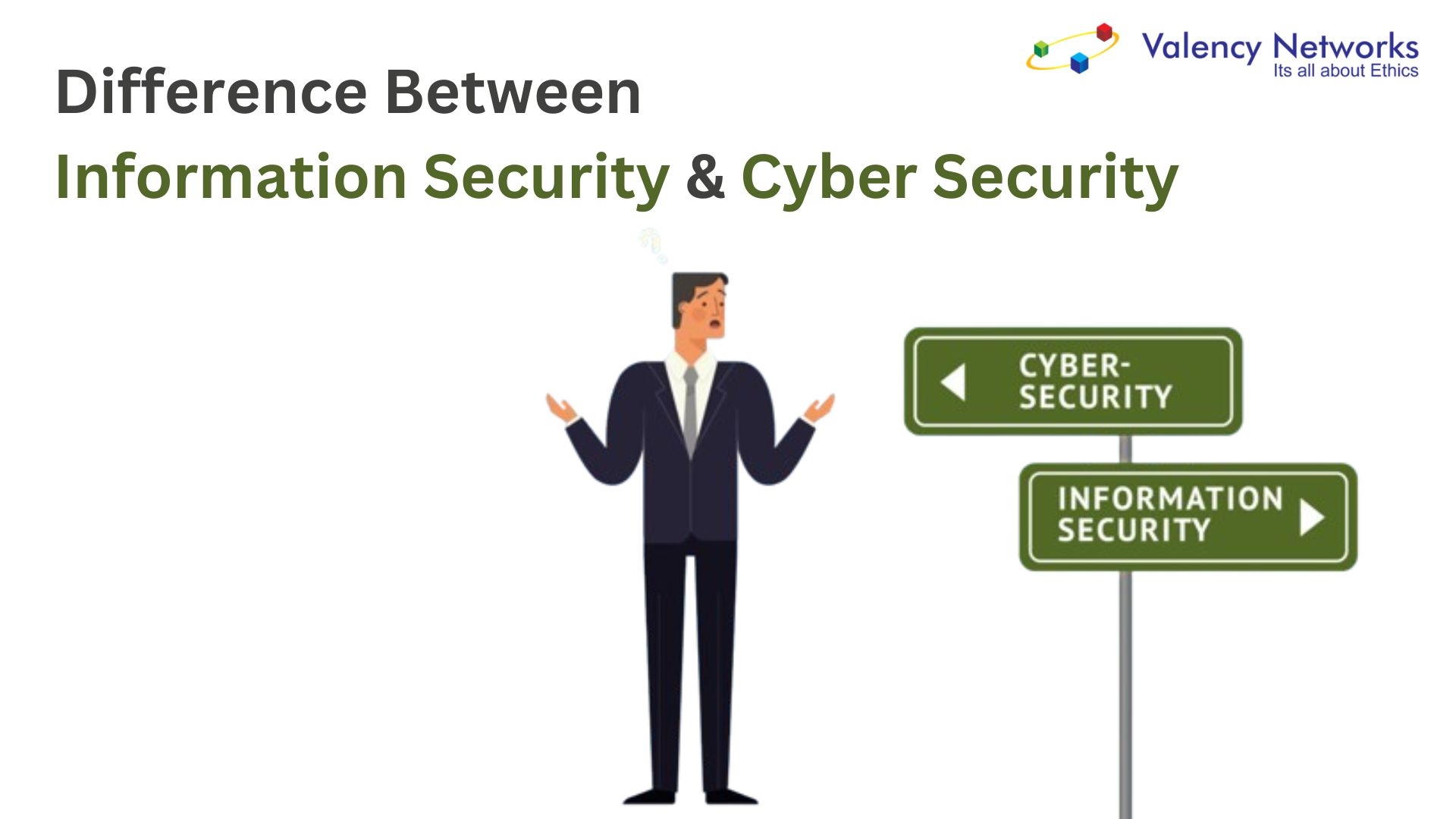- DORA Compliance – A Complete Guide by Valency Networks - 31/01/2025
- Is ICMP Timestamp Request Vulnerability worth considering - 31/12/2024
- Understanding Threat Intelligence in ISO 27001-2022 - 21/11/2024
Definitions
Information Security (InfoSec): Information security is the practice of protecting information from unauthorized access, use, disclosure, disruption, modification, or destruction. It focuses on ensuring the confidentiality, integrity, and availability (CIA) of data, whether the data is in transit, at rest, or in use. Information security encompasses physical, administrative, and technical measures to safeguard data.
Cyber Security: Cyber security is the practice of protecting systems, networks, and programs from digital attacks. These cyberattacks are typically aimed at accessing, changing, or destroying sensitive information, extorting money from users, or interrupting normal business processes. Cyber security involves the implementation of technologies, processes, and practices designed to protect networks, devices, programs, and data from attack, damage, or unauthorized access.
Differences
- Scope:
- Information Security: Broader in scope, InfoSec covers all types of information, whether it is stored electronically or physically. This includes paper records, intellectual property, and digital data.
- Cyber Security: More specific, cyber security focuses primarily on protecting electronic data and digital systems from cyber threats.
- Focus Areas:
- Information Security: Emphasizes on the CIA triad—confidentiality, integrity, and availability of information. It involves a wide range of security measures, including physical security controls (like locks and access controls), administrative controls (like policies and training), and technical controls (like encryption and firewalls).
- Cyber Security: Concentrates on protecting digital environments from cyber threats, such as malware, ransomware, phishing, and hacking. It involves securing networks, applications, and data from online attacks.
- Methods and Practices:
- Information Security: Utilizes a holistic approach, addressing security from multiple angles including physical security (e.g., securing server rooms), administrative security (e.g., security policies), and technical security (e.g., encryption, access controls).
- Cyber Security: Primarily uses technical measures and best practices designed to protect against specific cyber threats. This includes implementing firewalls, intrusion detection systems, anti-virus software, and regular security patches.
- Professional Roles:
- Information Security: Professionals might include roles such as Information Security Manager, Risk Analyst, and Compliance Officer, who focus on overall information governance and risk management.
- Cyber Security: Professionals might include roles such as Cyber Security Analyst, Penetration Tester, and Incident Responder, who focus specifically on detecting, responding to, and preventing cyber threats.
Examples
Information Security Example: A hospital maintains patient records in both physical and electronic formats. Information security measures in the hospital include:
- Locked cabinets for paper records.
- Access control policies that restrict who can view patient information.
- Encryption of electronic health records (EHRs) to protect data integrity and confidentiality.
- Regular audits to ensure compliance with regulations like HIPAA.
Cyber Security Example: An e-commerce company protects its online store and customer data from cyber threats by:
- Implementing SSL/TLS to encrypt transactions between customers and the website.
- Using firewalls to protect the network from unauthorized access.
- Employing intrusion detection systems to monitor and alert on suspicious activities.
- Regularly updating and patching software to defend against vulnerabilities.
- Conducting phishing awareness training to educate employees about common cyber threats.
In summary, while information security and cyber security are closely related, they differ in their scope, focus areas, methods, and professional roles. Information security is a broad field that aims to protect all forms of information, whereas cyber security is specifically focused on protecting digital data and systems from cyber threats. Understanding these distinctions is crucial for implementing comprehensive security strategies that safeguard both physical and digital assets.

